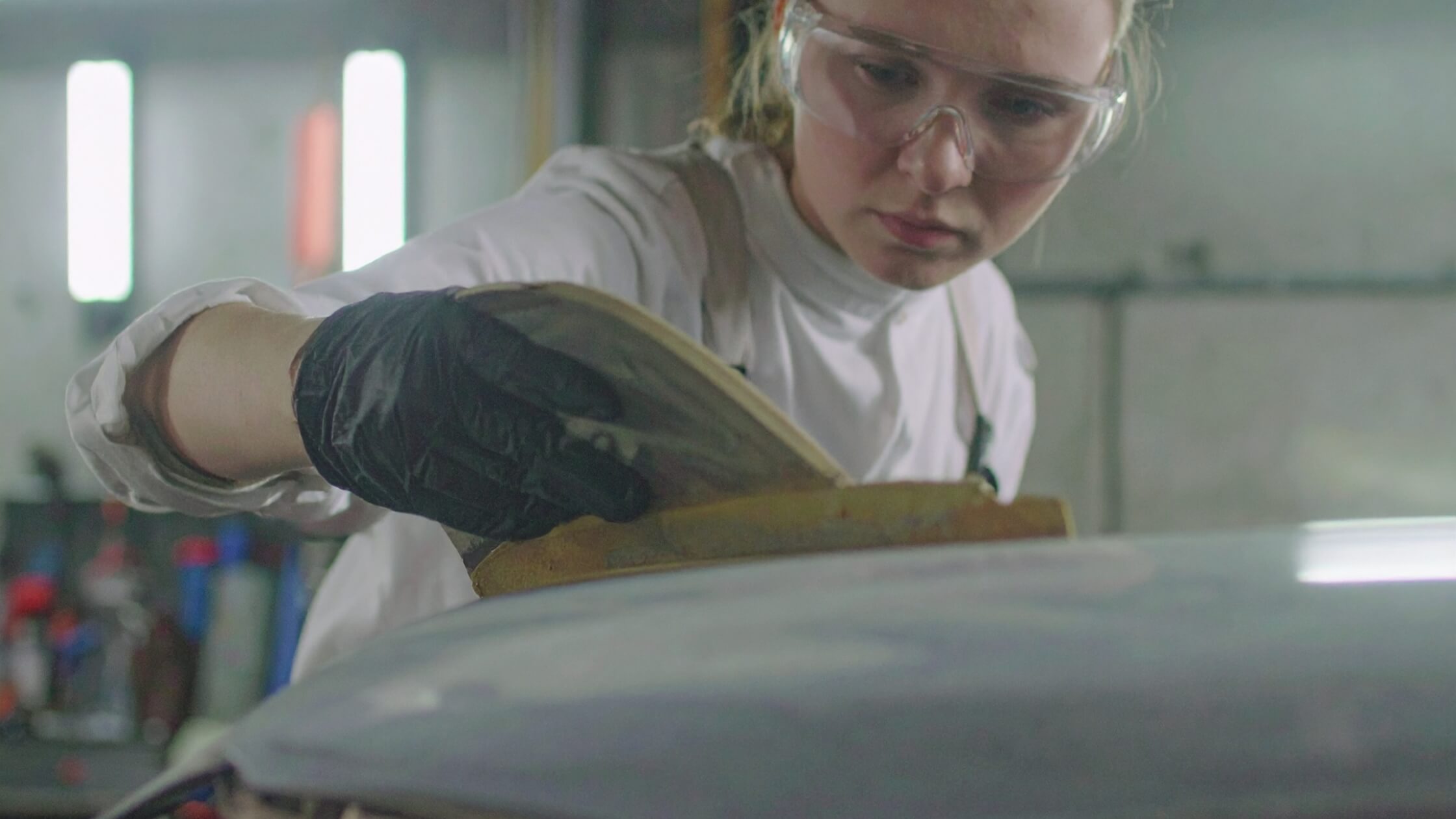Understanding auto body filler types for seamless, long-lasting results
Auto body repair is part science, part art. And like any good process, it depends on using the right tools and materials at each and every stage. Choosing the wrong filler can mean extra sanding, poor adhesion, or visible imperfections under your final coat. Whether you're fixing a small dent or restoring a showpiece, understanding how and when to use each type of filler is key to professional-grade results.
At Smooth Tech Co., we’ve worked with pros across the automotive and marine industries who demand high-performance materials that don’t slow them down. Our products are engineered to help you deliver a better finish with fewer callbacks - saving you both time and money.
First Things First: Know Your Repair Goals
Every auto body job is a little different. Are you working over metal or composite? (Think thermoset vs. thermoplastic—the repair approach can vary.) Do you need a fast sand time, high-build capacity, or a finish-ready surface? Some fillers are perfect for quick repairs, while others are better suited for deep damage or final profiling. Before choosing an auto body filler, it's important to step back and clarify what you're trying to accomplish. Not all repairs are created equal, and different goals call for different approaches.
-
Are you aiming for a fast turnaround with minimal downtime? Speed might take priority over ultra-fine finishing.
-
Is this a cosmetic repair where appearance is everything? Then a smooth, sandable finish and feathered edges become non-negotiable.
-
Are you dealing with a high-stress area, like a panel subject to vibration or heat? You’ll want to prioritize bond strength and performance under pressure.
-
Or maybe you’re building out a prototype or plug, where tooling, shaping, and future modifications are all part of the plan.
Clarifying the objective helps narrow your options and avoid wasted time, effort, or even rework.
Auto Body Filler Types: When to Use What
Once you’ve defined your repair goals, the next step is choosing the right compound for the job. Not all fairing and filler compounds are created equal — and using the wrong type can cost you in performance, durability, and finish quality.
Here’s a breakdown of common filler chemistries and when to use them:
Polyester Fillers
Quick, cost-effective, and easy to sand
Polyester-based fillers (like FairTech PE) are the go-to for fast, economical repairs where bond strength and environmental resistance aren’t critical. They cure quickly, feather out well, and work best on fiberglass or metal in low-stress areas. Use them when turnaround time is your top priority, just don’t expect them to hold up under long-term load or in chemically aggressive environments.
Vinyl Ester Fillers
Step up performance with added corrosion resistance
Vinyl ester compounds (like FairTech VE) offer a stronger, more chemically resistant option than polyester. They’re a smart choice for marine applications, chemical tanks, or automotive panels that will be topcoated with urethanes or gelcoats. They resist osmotic blistering and flex slightly under stress, making them ideal for composite repairs that need durability without going full epoxy.
Epoxy Fillers
The strongest bond, bar none
When strength, adhesion, and chemical resistance matter most, epoxy is your best friend. Epoxy-based fillers (like FairTech EX) form a tenacious bond to metal, composites, and even previously repaired areas. They’re ideal for structural repairs, restoration work, or anywhere failure isn’t an option. Epoxies don’t shrink, don’t crack, and they stay put, even in harsh environments or under constant vibration.
Lightweight Epoxy Fillers
Built for overhead, vertical, or large-area applications
Great for vertical or overhead work where sag can be a problem. FairTech EX-LW offers all the performance benefits of epoxy — with a lighter load. The reduced weight makes it easier to apply in vertical or overhead positions without sagging or slumping. It’s a favorite for shaping, fairing, and finishing large panels or irregular surfaces where workability and hold are both essential.
If you’re unsure what to use, we always recommend starting with the substrate material, thinking about the environment, and considering what comes next (primer, paint, gelcoat, etc.).
Don’t Overlook Application Conditions
Temperature, humidity, and even the spreader you use can affect the final outcome. Always follow your product’s mixing instructions (especially with hardeners like MEKP or BPO), and keep your working surface clean and sanded. Contamination is the enemy of proper adhesion!
Let the Product Work For You
There's no one-size-fits-all filler or fairing compound. But there is a right product for every job and when you use it, everything goes smoother. Smooth Tech Co. makes a wide range of fairing compounds and performance fillers that work across automotive substrates, climates, and repair types. From quick-setting to final finish, our product lineup is designed to move you from damaged to done with less guesswork and more confidence.
Ready to get started? Browse our shop to find the right product for your next repair. Not sure which product is best for your job? Contact our team today with questions!


Share:
Best Practices for Surface Prep Before Filling or Fairing
Why Smooth Tech Compounds Are Built Different